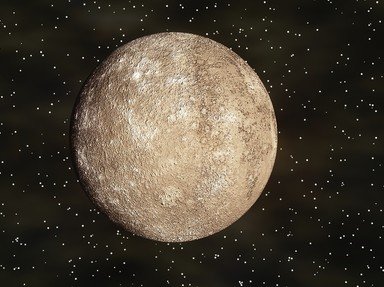Quiz Answer Key and Fun Facts
1. Mercury has many craters on its surface. Which is the largest in diameter?
2. What is unique about Mercury compared to other rocky planets?
3. For a brief time in 1974, astronomers thought they had detected a small moon orbiting Mercury. What had they actually detected?
4. NASA astronomers have said that in the case of discovering a Mercurian moon, the recommended name is what?
5. Which of these gases has never been detected on Mercury, even in trace amounts?
6. How hot is the Sun-facing side of Mercury at aphelion (furthest distance from the Sun)?
7. Does Mercury have a magnetic field?
8. How much of Mercury's surface was mapped after the MESSENGER probe's first flyby?
9. Mercury is, on average, the closest planet to Earth.
10. Which layer of Mercury is the thickest in diameter?
Source: Author
jonthomas
This quiz was reviewed by FunTrivia editor
CellarDoor before going online.
Any errors found in FunTrivia content are routinely corrected through our feedback system.
